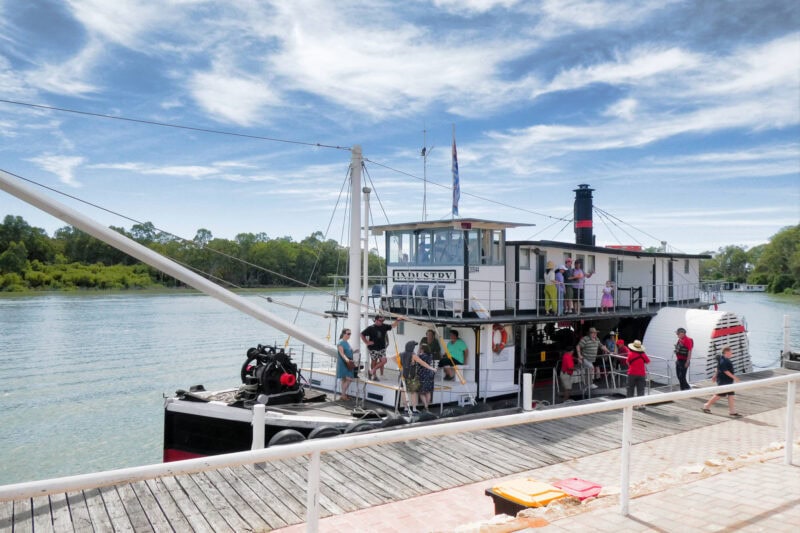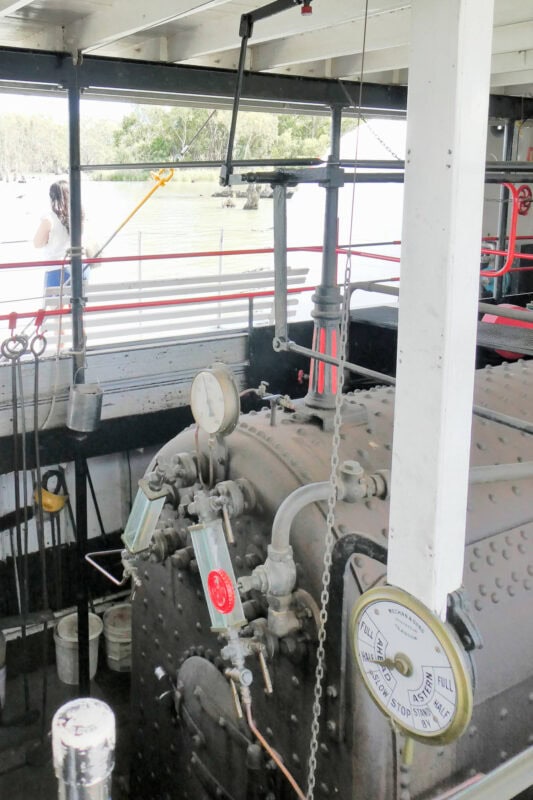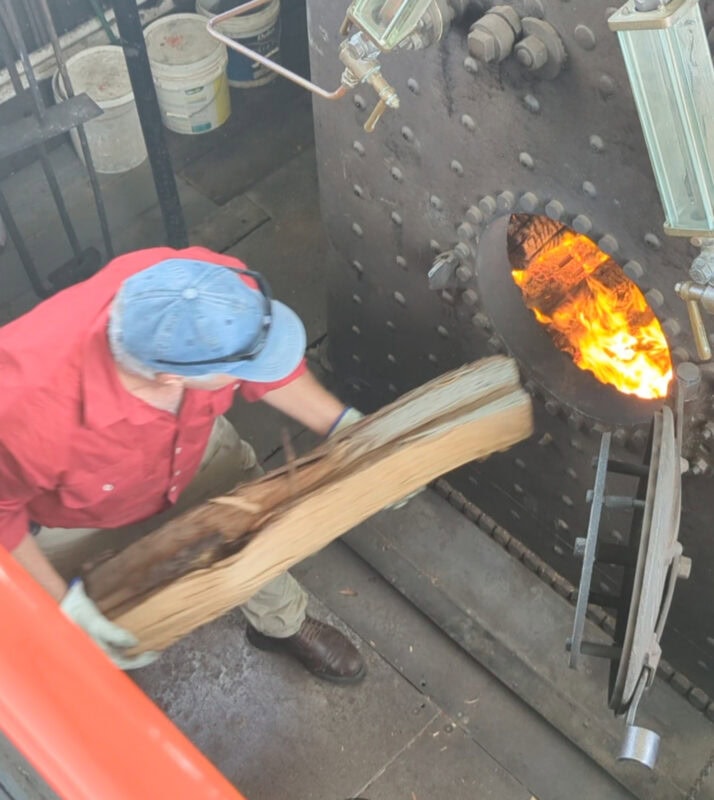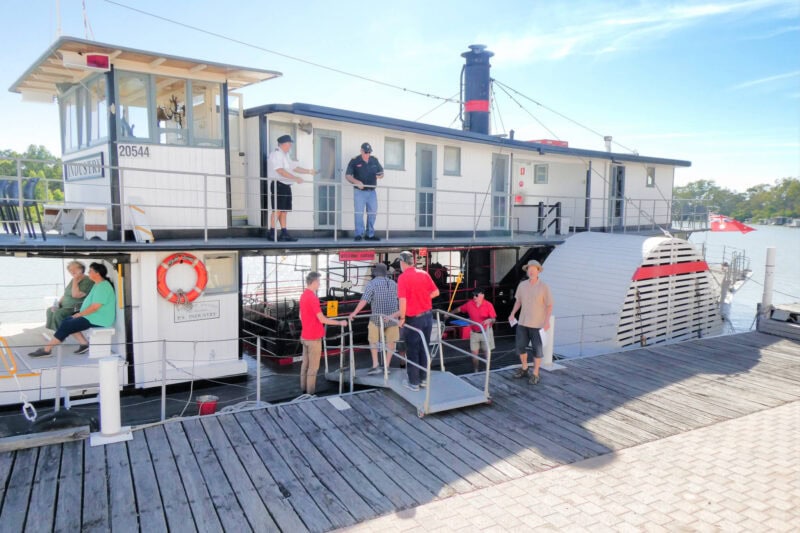Ride the PS Industry: Things to do in the Riverland

PS Industry, docked at Renmark SA
The PS Industry (PS is short for Paddle Steamer) is proudly docked in Renmark, South Australia, on the Murray River. This historic vessel is lovingly maintained by a team of friendly volunteers, who keep it operational, beautifully preserved, and ready to take tourists and locals on hour-long rides. If you’re looking for things to do in the Riverland, this is certainly worth putting on your list. The trips are scheduled for the first Sunday of each month (except February) and the Sundays of most long weekends. Along the journey there’s interesting commentary sharing insights about the boat, the river, the surrounds and the history
PS Industry History
The aptly-named Industry was a government-owned boat working between 1911 and 1969, de-snagging the river, assisting in keeping the river open, and helping with the construction of the locks and weirs along the river: This important work was begun in a time when the river was a vital highway for transport of goods and people. For comparison, railways to the Riverland didn’t appear until 1913. The Industry was eventually replaced by the MV Maratala, which is based in Berri. Maratala, I am told, is a local indigenous word for Industry!
Our Experience Aboard the Industry
Stepping out of the car on a hot day, we were greeted by the sweet, nostalgic smell of woodsmoke. Yes, this beautiful boat is powered by a wood-fired boiler, which drives the pistons and, in turn, the iconic spinning paddle blades on either side.
Booking online the night before was easy, though we were amused to find that we also received hand written tickets at the gate—delightfully old-fashioned! To our surprise, the ticket numbers were also entries in a lucky draw, and we won an Industry tea towel—what a treat!
Friendly volunteers in their distinctive red shirts were on hand to guide us aboard. A short gangplank led us to the lower deck, where the heat radiated from the large black boiler at its center. We learned the fire in the boiler had been lit the evening before. Nearby, a neat stack of long wood pieces waited to keep the fire and pressure going.
We found seats at the front of the top deck (don’t forget your hat, sunglasses, and sunscreen!). The rhythmic sound of water and the hiss of steam soon signaled our departure. A short whistle blast, a call of “all clear,” and the steady chug-splash of the paddles let us know we were underway—gliding at a leisurely 10 km/h.


The Sights and Sounds of the Murray
The narrated commentary provided us with fascinating tidbits about the river’s past and present:
- The skeletal trees at the entrance of Ral Ral Creek were drowned when the weirs were constructed.
- The Lower Murray Flag we saw raised before departure symbolizes the Murray and its three main tributaries: the Murrumbidgee, Lachlan, and Darling rivers.
- Carp, accidentally introduced in the 1970s, have caused significant damage to the ecosystem.
- High water marks from the 2022 flood are still visible on the trees.
- Whistling Kites are the most common raptors here, though you might occasionally spot Peregrine Falcons.
- The riverbanks are lined with River Red Gums and Black Box trees. Willows, though not native, were reportedly planted in the 1800s to help mark the main channel for navigation.
- Koalas, introduced from Kangaroo Island in the 1960s, can sometimes be seen along the riverbanks.
- The blue river marker signs every 2 km indicate the distance from the river’s mouth and are useful for navigation and emergencies.
- Yellow floating pontoons with solar panels record salinity and other metrics. Fun fact: 2 million tonnes of salt enter the Murray each year!
- Passengers were invited to visit the wheelhouse and take control of the steering for short periods.
A Big Thank You to the Volunteers
Our trip on the Industry was delightful from start to finish. Hats off to the dedicated volunteers who meet every Tuesday to maintain this remarkable piece of history. Their enthusiasm is contagious, and they’ve created an experience that captures the spirit of Australia’s early days of transport. Whether you’re a local or a visitor, this ride offers a charming and educational glimpse into life on the Murray River.
If you’re looking for other great ways to get onto the water during your Riverland visit, check out our blog:
